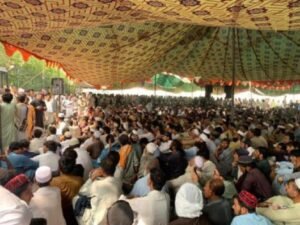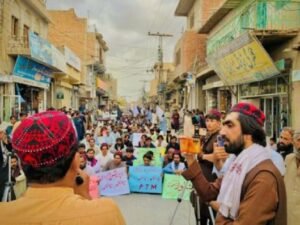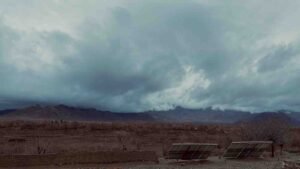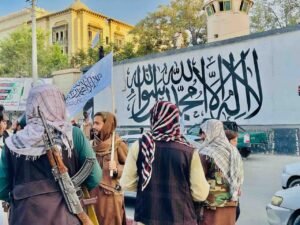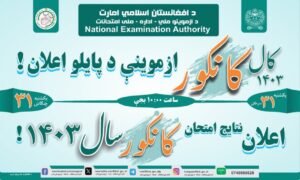The Complicated Terrain of Taliban Opposition: Difficulties and Opportunities

Ahmad Massoud (right with whitish jacket), the head of National Resistance Front, known as NRF with his team during Vienna Conference on Afghanistan on 26 April 2023. Photo: @Ali Ahmad
By Ilhamuddin Afghan
The fall of Kabul to the Taliban in August 2021 was a major turning point in Afghanistan’s history. Since the Taliban regained control of the country, armed and political opposition movements have rapidly emerged. However, the Taliban’s opponents are not a unified group, presenting a variety of complex challenges to their effectiveness.
This analysis examines the intricacies of the opposition, highlighting its fragmented framework, the role of armed groups, the lack of foreign support, and political disputes. Despite the challenges, it highlights the importance of unity and international cooperation for Afghanistan’s future.
Following the Taliban’s comeback, armed opposition organizations emerged across Afghanistan. Two of them, the National Resistance Front (NRF) and the Freedom Front have gained momentum for their intermittent attacks against the Taliban in different parts of the country.
However, these armed organizations often operate in isolation and without a common goal. Afghans are afraid of the repercussions of publicly supporting these groups while the Taliban are in control, so the public popularity of these opposition groups is limited. This uncertainty makes it more difficult to build a strong opposition to the Taliban government.
One group that has posed a significant threat to the Taliban is the Islamic State, better known as Daesh. Major attacks in Afghanistan have been attributed to Daesh, a group notorious for its brutal methods and radical beliefs. Its ability to attract media attention suggests strength, although its exact potency remains unclear. Daesh’s arrival has alarmed the Taliban, but the security situation in the region is also in doubt.
The dilemma of political opposition
In addition to armed groups, political opposition movements have emerged, albeit with their own challenges. These movements tend to lack a defined plan and struggle to work together effectively.
For example, former Afghan Foreign Minister Muhammad Hanif Atmar leads the Peace and Justice Movement, which rejects the legitimacy of the Taliban and believes that the current situation cannot be resolved through violence.
Meanwhile, members of the ousted government and Afghan intellectuals have formed the Republicans, another political opposition with no fixed agenda, based in the United States. The inability of these political movements to cooperate and communicate with each other casts doubt on their overall influence.
Under the previous US-backed government, more than fifty political parties were registered in Afghanistan. While many of these parties have remained silent or inactive, a number of them have expressed their opposition to the Taliban’s policies.
The Islamic Jamiat Party has openly condemned the Taliban’s actions and is often referred to as an armed group. However, the Islamic Party (Hezbi-Islami), led by Gulbuddin Hekmatyar, has been slow to respond, possibly due to Taliban constraints.
Two former leaders now living under Taliban authority, Hamid Karzai and Dr Abdullah, have declared their opposition to the Taliban. However, their influence is still limited. Lower-level politicians such as the former governor of Nangarhar, Zia-ul-Haq Amarkhil, have been unable to bring about change, even when they have denounced the Taliban.
Lack of cohesion and foreign support
Two years after the Taliban seized power, there is still no cohesive opposition movement in Afghanistan. There is still no broad consensus on the country’s future, either domestically or internationally. Analysts say that because of the Taliban’s intransigence, Afghans are still reluctant to take significant steps toward a better future. Any possible power-sharing deals are complicated by the Taliban’s belief that they have defeated NATO forces.
Nevertheless, the Afghan opposition landscape is complicated, with dispersed political groups and armed factions operating in different parts of the country. Although some individuals and groups publicly oppose the Taliban, their effectiveness as a group is limited by their lack of cohesion and foreign support. With the Taliban still in complete control, the future of Afghanistan remains uncertain.
Regardless of their political affiliation, Afghans must be able to put aside their differences and work together to create a single, cohesive nation if they are to move forward. Only through unity and international cooperation can Afghanistan hope to chart a path to peace and prosperity.
Ilhamuddin Afghan is a university professor based in Afghanistan.
Note: The contents of the article are of sole responsibility of the author. Afghan Diaspora Network will not be responsible for any inaccurate or incorrect statement in the articles.

